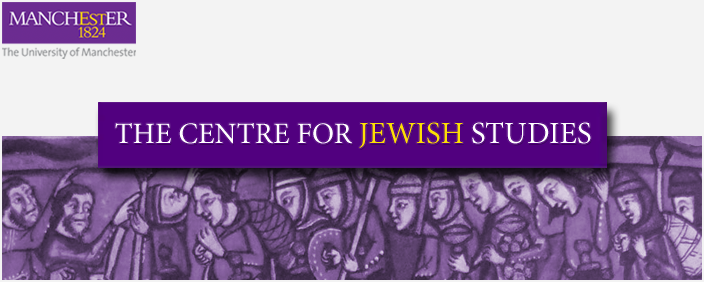14. A Quiet Period for Manchester Zionism
With the Balfour Declaration (1917) came a short burst of popular Zionism, followed by a decade of relative inactivity. When it became obvious that a homeland would not be appearing immediately, much of the enthusiasm waned. In Manchester, a small number of intellectuals, Hebrew scholars and political activists bravely set up several societies in spite of a lack of support at the grass-root level, and in the face of the imposing opposition of many communal leaders. A few of the names which reoccur include the stalwarts Israel Yoffey, A Laserson, and Leon Locker.
 During this period, the Daughters of Zion soldiered on under Helena Weisberg and Mrs H Matz, as did the MZA whose high turn-over of presidents during this time included SM Kropman, the Sephardi businessman Samuel Cohen, and Dr JM Yoffey, the son of Rabbi Yoffey. The Jewish National Fund (JNF), the organisation which would come to dominate Zionist fund-raising in Manchester, drew the largest numbers of people to its committee from 1920 including, eventually, Nathan Laski himself. Even so, its minutes are full of complaints of low attendance and lack of commitment. Several societies emerged only to disappear shortly afterwards, such as the Sephardi Palestine Association, led by M Altaras and I Cansino, which struggled from around 1926 until 1931.
During this period, the Daughters of Zion soldiered on under Helena Weisberg and Mrs H Matz, as did the MZA whose high turn-over of presidents during this time included SM Kropman, the Sephardi businessman Samuel Cohen, and Dr JM Yoffey, the son of Rabbi Yoffey. The Jewish National Fund (JNF), the organisation which would come to dominate Zionist fund-raising in Manchester, drew the largest numbers of people to its committee from 1920 including, eventually, Nathan Laski himself. Even so, its minutes are full of complaints of low attendance and lack of commitment. Several societies emerged only to disappear shortly afterwards, such as the Sephardi Palestine Association, led by M Altaras and I Cansino, which struggled from around 1926 until 1931.
 Manchester Jews were shaken back into Zionist activity for several reasons. Palestine was itself very much in the news with an earthquake in 1928 and riots in Jerusalem and Hebron the following year. There were world-wide protests regarding what has been called the Wailing Wall incident in 1929 when, acting upon Muslim complaints, British police in Palestine removed the screen separating men and women at the Temple Mount. The riots that ensued left dead 133 Jews and 87 Arabs, and Manchester Jewry responded by organising a great Protest Meeting. Another important factor was that the national EZF was refinanced (by the Marks-Sieff-Sacher families among others), enabling full-time to workers revitalise local Zionist societies. In Manchester, there was an influx of new leaders with fresh ideas, including Dr JM Yoffey and Leslie Lever. Attendance at the MZA had been down to 10 members until Joffey moved the public meetings to the Midland Hotel and brought in speakers of higher prominence.
Manchester Jews were shaken back into Zionist activity for several reasons. Palestine was itself very much in the news with an earthquake in 1928 and riots in Jerusalem and Hebron the following year. There were world-wide protests regarding what has been called the Wailing Wall incident in 1929 when, acting upon Muslim complaints, British police in Palestine removed the screen separating men and women at the Temple Mount. The riots that ensued left dead 133 Jews and 87 Arabs, and Manchester Jewry responded by organising a great Protest Meeting. Another important factor was that the national EZF was refinanced (by the Marks-Sieff-Sacher families among others), enabling full-time to workers revitalise local Zionist societies. In Manchester, there was an influx of new leaders with fresh ideas, including Dr JM Yoffey and Leslie Lever. Attendance at the MZA had been down to 10 members until Joffey moved the public meetings to the Midland Hotel and brought in speakers of higher prominence.
Ironically, the second explosion of Zionist societies, which occurred in the late 1920s and early 1930s, heralded the demise of the MZA as Manchester’s centre of Zionist leadership. Up until this time, the Zionist Central Council (ZCC) had mainly been concerned with Keren Hayesod and JNF work, that is, mainly concerned with financial matters. Around 1927, however, it was decided to co-ordinate all Zionist activities under the control of the ZCC at the new Maccabean House on Cheetham Hill Road. Following "much acrimonious discussion", the MZA eventually submitted and agreed to affiliate.
Of the many new societies to emerge, perhaps the most significant was the local branch of the Jewish Agency, well under way by 1931, which specifically brought together Zionists and non-Zionists to co-operate in the development of a national home. Also important was the growth of new Youth Societies that were to prepare the next generation of Zionist leadership.
__________________________
IMAGE AND DOCUMENT CREDITS: Manchester Zionist Society (Speaking for Women; Rebecca Sieff and the WIZO Movement), Samuel Cohen (I Slotki, 70 Years of Hebrew Education) Full reference: Sources.



